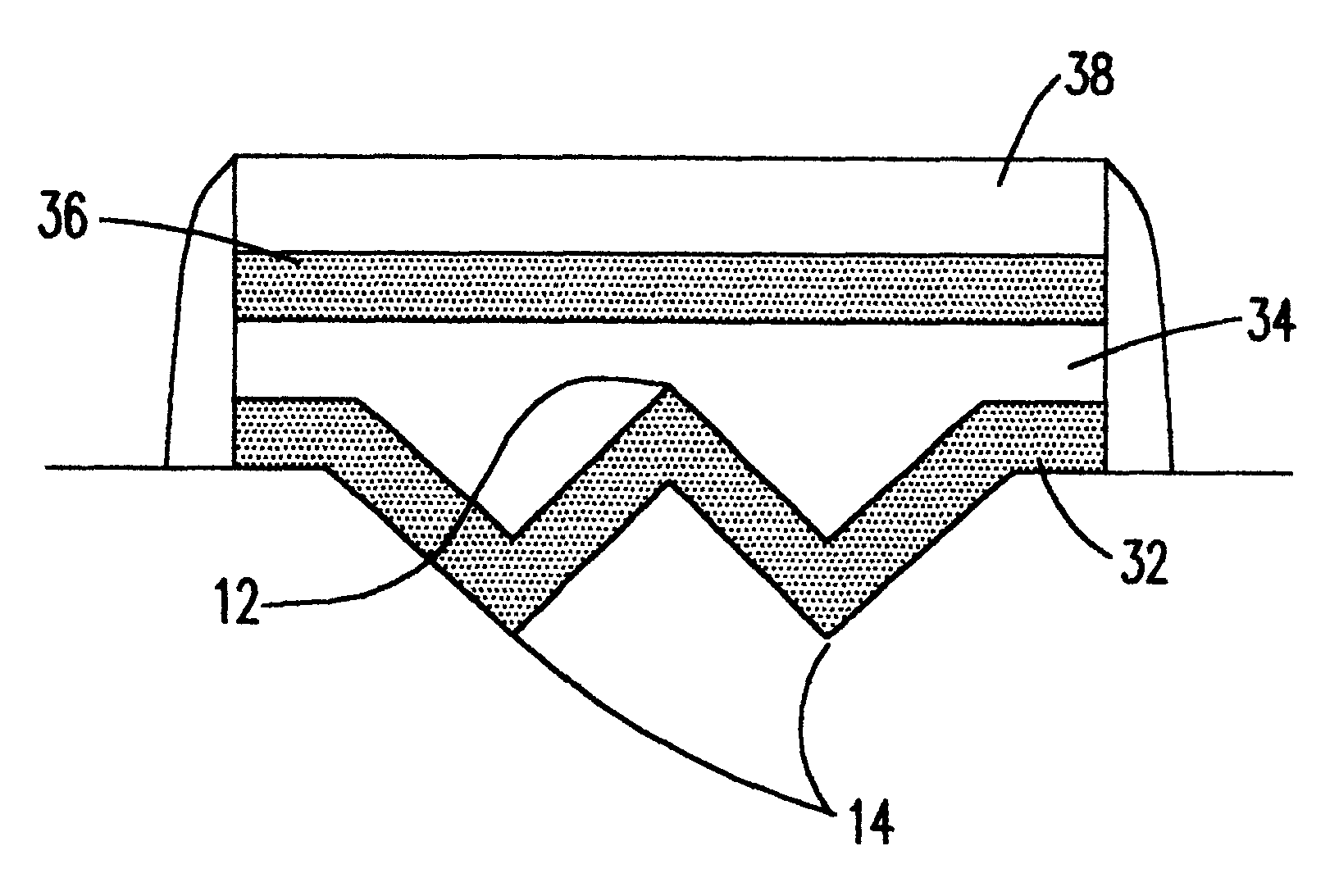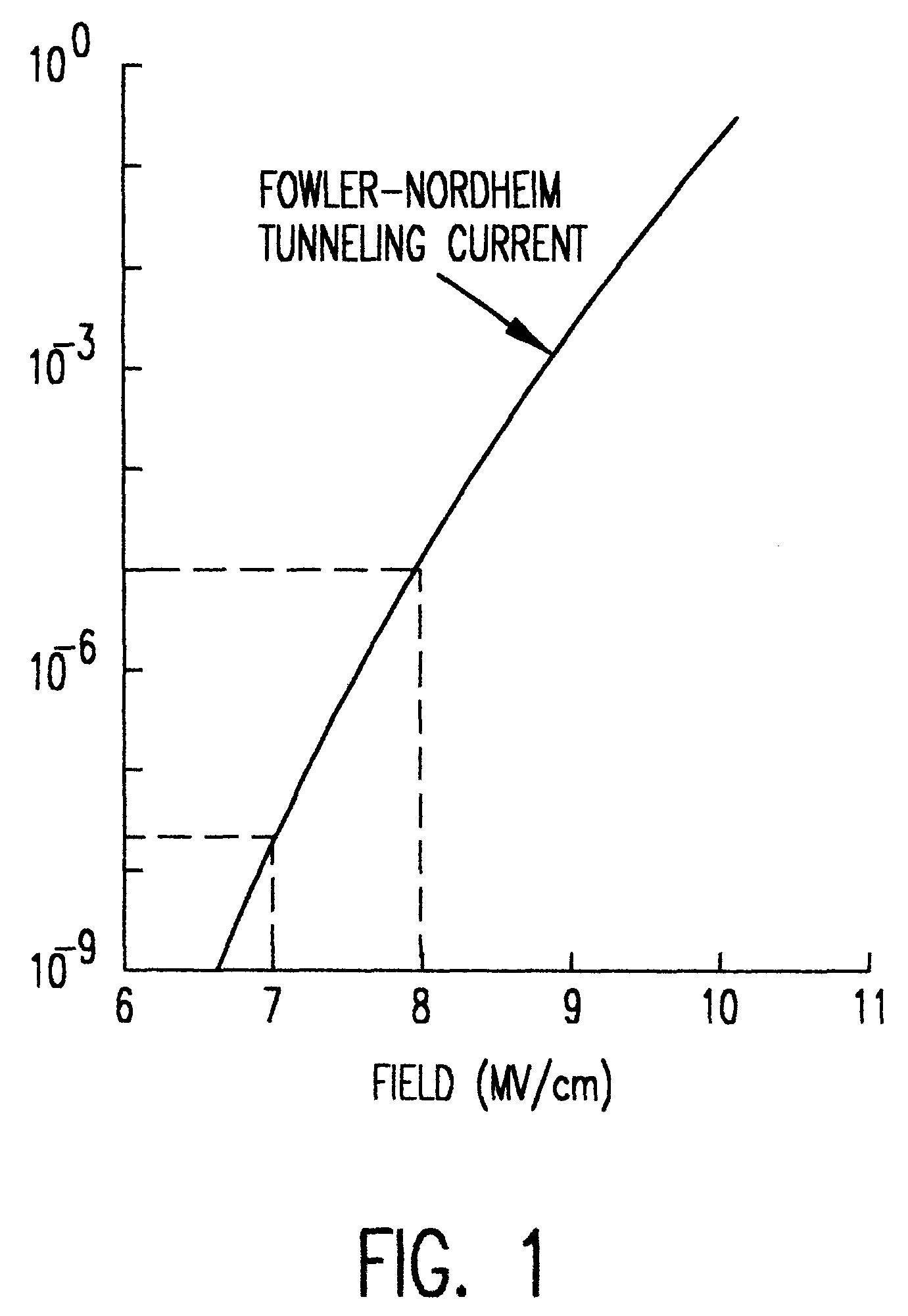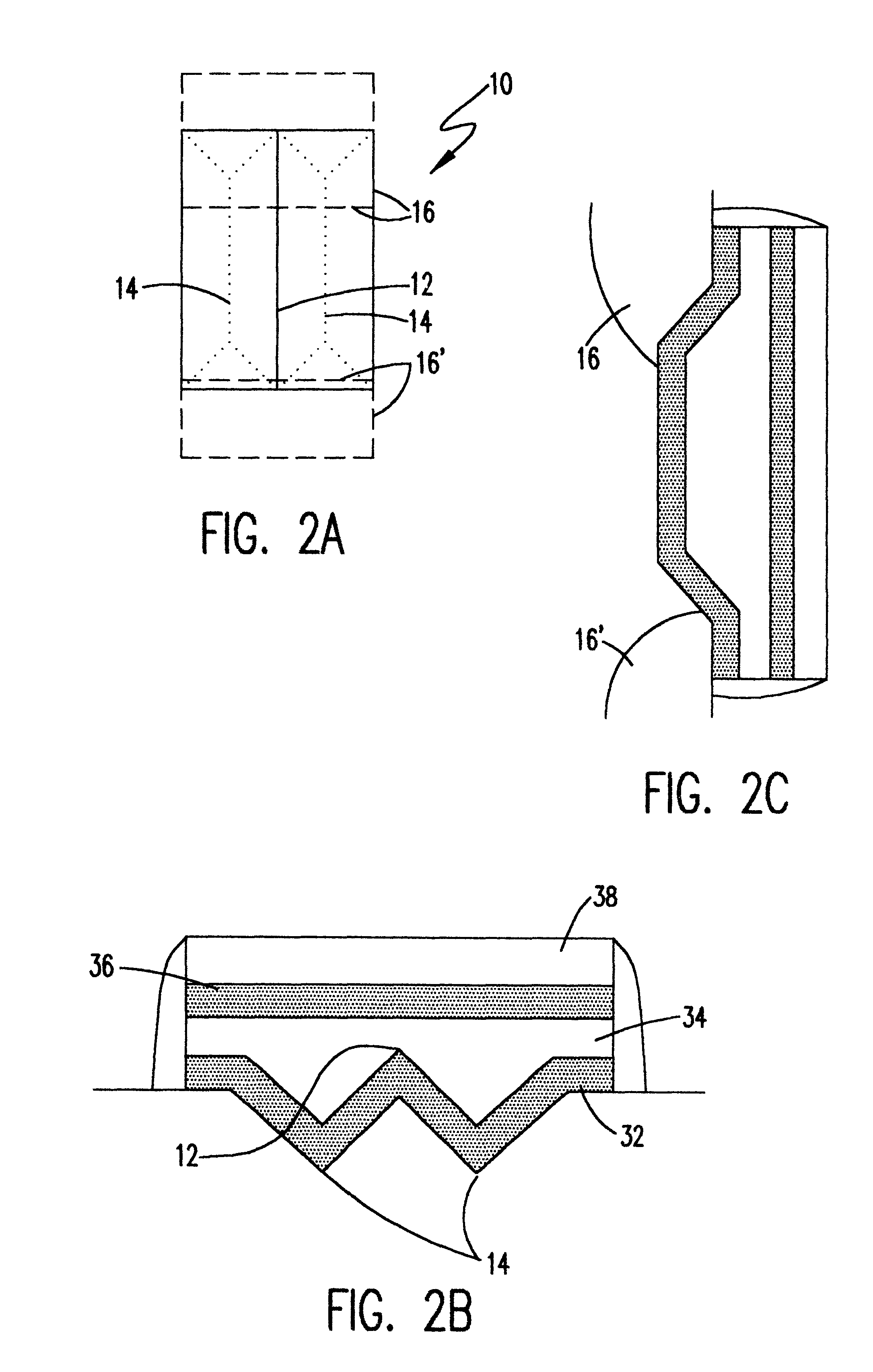NVRAM array device with enhanced write and erase
a technology of array devices and random access memory, applied in the direction of semiconductor devices, electrical devices, transistors, etc., can solve the problems of only storing data in random access memory, write and erase cycle times, and potential damage to the storage medium
- Summary
- Abstract
- Description
- Claims
- Application Information
AI Technical Summary
Benefits of technology
Problems solved by technology
Method used
Image
Examples
Embodiment Construction
Referring now to the drawings, and more particularly to FIG. 1, there is shown a graph of Fowler-Nordheim current density as a function of electric field. This graph is published in "Flash Memory Cells--An Overview" by Paolo Pavan et al.; Proceedings of the IEEE Vol. 85, No. 8: August 1997: pp. 1248-1271. It is apparent from FIG. 1 that current density increases sharply and almost exponentially with increases in electrical field.
However, as alluded to above, increasing operating voltage sufficiently to obtain a significant increase in current density is not feasible since other important qualities of a non-volatile memory cell storing such tunnelling current would be severely compromised. Additionally, higher voltages requires higher voltage power supplies, more robust power conditioning circuitry and high power requirements while many NVRAM applications, such as smart cards, necessarily require low power operation and supporting circuits of very small size. Accordingly, a basic pri...
PUM
 Login to View More
Login to View More Abstract
Description
Claims
Application Information
 Login to View More
Login to View More - R&D
- Intellectual Property
- Life Sciences
- Materials
- Tech Scout
- Unparalleled Data Quality
- Higher Quality Content
- 60% Fewer Hallucinations
Browse by: Latest US Patents, China's latest patents, Technical Efficacy Thesaurus, Application Domain, Technology Topic, Popular Technical Reports.
© 2025 PatSnap. All rights reserved.Legal|Privacy policy|Modern Slavery Act Transparency Statement|Sitemap|About US| Contact US: help@patsnap.com



